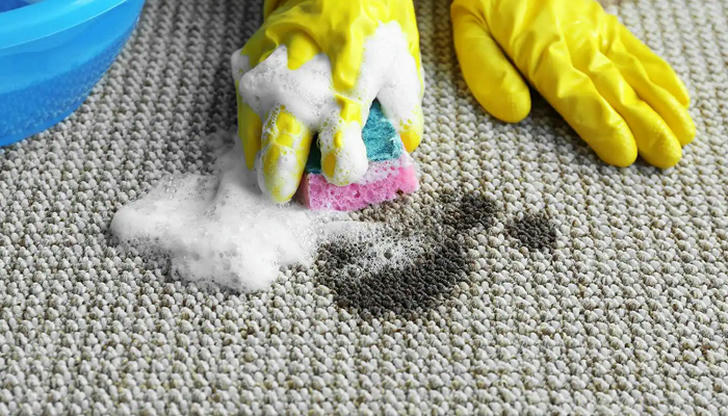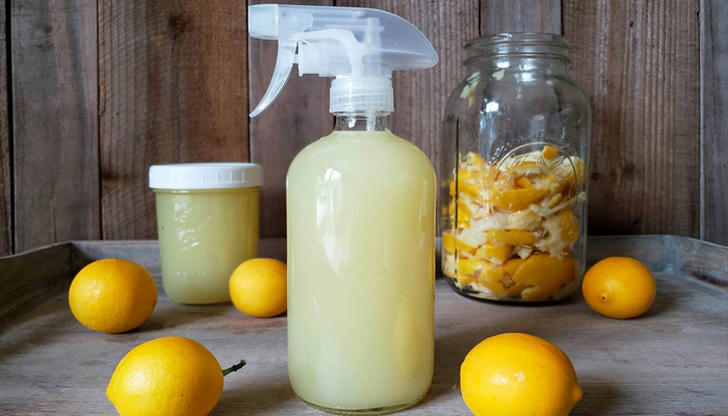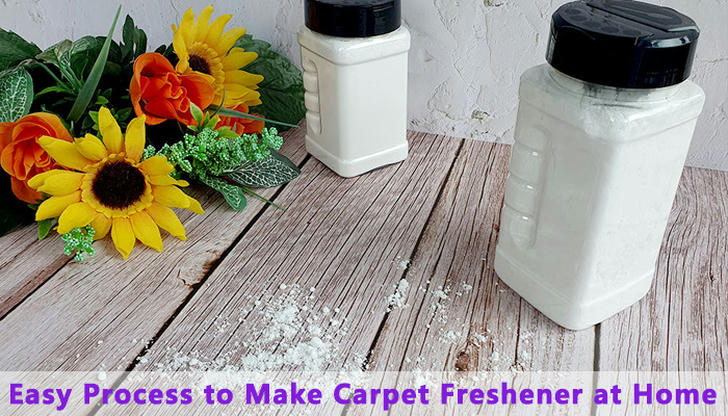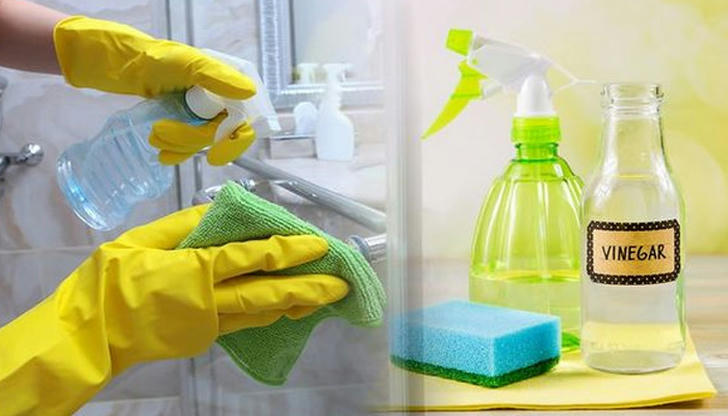Budget-Friendly Home Cleaning: Effective DIY Solutions Using Everyday Items
Keeping your home clean is essential for your health, well-being, and overall comfort. However, many commercial cleaning products are often expensive and contain harsh chemicals. A budget-friendly and environmentally conscious approach involves using common household items to create DIY cleaning solutions. These items are not only effective but also non-toxic, safe for children and pets, and easy to find. In this article, we’ll explore practical, science-backed, and cost-effective cleaning solutions that can help you maintain a spotless home.

I. Basic Cleaning Solutions
1. All-Purpose Cleaner
An all-purpose cleaner can tackle a wide range of surfaces and is the cornerstone of any cleaning routine. You can easily make your own with just a few ingredients.
Ingredients: White vinegar (1 part), water (1 part), optional: a few drops of essential oil (like lavender or tea tree oil for fragrance and added antibacterial properties).
How it works: Vinegar is a natural acid that helps break down grease, dirt, and grime. It also has mild disinfectant properties. The essential oil adds a pleasant fragrance and can provide additional antibacterial action.
Where to use: Kitchen countertops, bathroom sinks, mirrors, and even windows. Vinegar's acidity makes it effective at cutting through grease, while the essential oils neutralize unpleasant odors.
2. Baking Soda Scrub
Baking soda is a versatile ingredient that serves as a mild abrasive, making it perfect for scrubbing tough stains.
Ingredients: Baking soda (2-3 tablespoons), water (enough to make a paste).
How it works: Baking soda’s abrasiveness allows it to scrub off stubborn stains without scratching surfaces. It also deodorizes and neutralizes odors, making it a great tool for cleaning areas prone to dirt build-up.
Where to use: Sinks, bathtubs, ovens, and stovetops. Its abrasive quality helps remove stuck-on food and soap scum, while its deodorizing effect neutralizes smells.
3. Lemon Cleaner

Lemon juice not only provides a fresh scent but also has natural cleaning properties.
Ingredients: Lemon juice (from one lemon), white vinegar (1 cup), water (1 cup).
How it works: The citric acid in lemon juice acts as a natural bleach, helping to remove stains and disinfect surfaces. It also cuts grease and leaves a fresh scent behind.
Where to use: Great for cleaning kitchen surfaces, cutting boards, microwaves, and even removing stains from white fabrics. It works especially well for disinfecting food prep areas.
II. Specialized Cleaning Hacks
1. Glass and Mirror Cleaner
Glass and mirrors can be tricky to clean without leaving streaks, but a simple solution can make them shine.
Ingredients: White vinegar (1 part), water (1 part).
How it works: Vinegar breaks down dirt and grime, leaving glass and mirrors clean and streak-free. It evaporates quickly, ensuring no residue is left behind.
Where to use: Mirrors, windows, glass tables, and shower doors.
2. Carpet Freshener

Over time, carpets can accumulate odors, but a natural freshener can neutralize smells without harsh chemicals.
Ingredients: Baking soda (1 cup), essential oil (5-10 drops of your choice, like lavender or eucalyptus).
How it works: Baking soda absorbs odors, while essential oils provide a pleasant fragrance. The baking soda also helps lift dirt from carpet fibers when vacuumed.
Where to use: Carpeted areas and upholstery. Sprinkle generously on carpets, let it sit for 15-20 minutes, then vacuum.
3. Furniture Polish
Wooden furniture requires special care to keep it looking shiny and well-maintained.
Ingredients: Olive oil (1/4 cup), lemon juice (1 tablespoon).
How it works: Olive oil nourishes and polishes wood, while lemon juice acts as a cleaner and helps cut through grease and dust. The combination leaves a natural shine without chemicals.
Where to use: Wooden tables, chairs, cabinets, and any other wood surfaces.
III. Eco-Friendly and Non-Toxic Cleaning Solutions
1. Essential Oils for Freshness
Essential oils offer a natural alternative to air fresheners and are a powerful addition to your cleaning regimen.
Ingredients: Essential oils (tea tree, lavender, eucalyptus, etc.), water (1 cup).
How it works: Many essential oils have antibacterial and antifungal properties. They also help neutralize odors and create a refreshing scent in your home.
Where to use: Bathrooms, kitchens, and laundry rooms. You can add a few drops to your all-purpose cleaner or use them in a diffuser to freshen the air.
2. Vinegar for Deodorizing and Disinfecting

Vinegar is an inexpensive, non-toxic cleaning powerhouse. It’s versatile and effective at both deodorizing and disinfecting.
Ingredients: White vinegar (1 part), water (1 part).
How it works: The acetic acid in vinegar neutralizes odors and helps break down soap scum, grease, and grime. It’s also an effective disinfectant, killing many types of bacteria and viruses.
Where to use: Trash cans, drains, countertops, and laundry. You can even add vinegar to your laundry as a fabric softener alternative.
IV. Cleaning the Floors
1. DIY Floor Cleaner
You can clean hardwood, tile, and vinyl floors with a homemade solution that’s both effective and safe.
Ingredients: Vinegar (1 cup), water (1 gallon), a few drops of dish soap.
How it works: Vinegar cuts through dirt and grime, while dish soap helps break down grease. This solution is gentle enough for most floors and leaves them streak-free.
Where to use: Hardwood, tile, and vinyl floors. Avoid using vinegar on stone floors like granite or marble, as it may damage the surface.
2. DIY Carpet Cleaner
Carpet cleaning doesn’t have to involve expensive, harsh chemicals. A homemade cleaner can do the job just as well.
Ingredients: Baking soda (1 cup), white vinegar (1 cup), water (2 cups).
How it works: Baking soda lifts dirt and odors from carpet fibers, while vinegar breaks down stains. This solution is safe and effective for both fresh stains and general maintenance.
Where to use: For spot cleaning or general carpet freshening. Apply to stains, let it sit for 15 minutes, then blot with a clean cloth.

V. Tips for Organizing and Maintaining Cleanliness
1. Decluttering
A clutter-free home is easier to clean and helps maintain an organized space.
- Tip: Regularly go through your belongings and get rid of items you no longer need. Use storage solutions like bins, baskets, and shelves to keep things tidy. By minimizing clutter, you reduce the number of surfaces that gather dust and grime.
2. Establishing a Routine
Cleaning is easier when it’s done regularly. Establish a routine to maintain cleanliness without overwhelming yourself.
- Tip: Dedicate a few minutes each day to simple tasks like wiping down surfaces, putting things away, and vacuuming high-traffic areas. Tackle more intensive cleaning tasks (like deep cleaning the oven or windows) on a weekly or monthly basis.
Conclusion
Cleaning your home doesn’t have to be expensive or involve harmful chemicals. By using everyday items like vinegar, baking soda, lemon juice, and essential oils, you can create powerful, eco-friendly cleaning solutions that are effective, safe, and budget-friendly. These DIY cleaners not only reduce your exposure to toxic substances but also help you save money while maintaining a fresh, clean home. With a few simple ingredients and a little effort, you can keep your home sparkling without breaking the bank.
